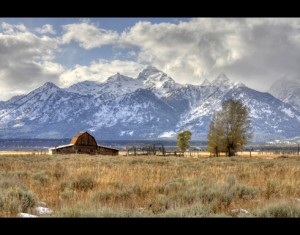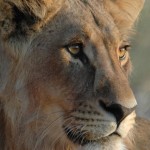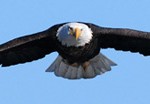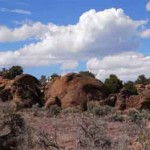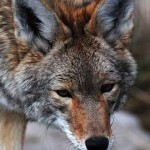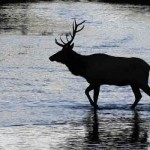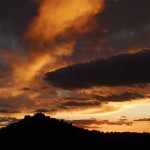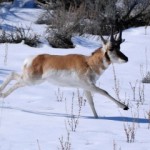Through the Viewfinder
Range of Focus
The area in a photograph, from near to far, which appears to be in sharp focus is called “depth of field” (probably better called “range of focus”). The laws of light physics and optics dictate this sharply focused area extends from one-third the distance in front of the point of focus to two-thirds beyond.
Read the rest of this article
Tack Sharp
Tack Sharp means everything in the image which should be sharply in focus is sharply in focus. You know it when you see it. It’s one of the first components of a photograph your eye instinctively recognizes. If the element of the photograph you want to convey isn’t “tack sharp” your viewer’s eye will wander through the image looking for the focus point. No matter what other positive elements the photograph contains, an out-of-focus photograph should be immediately deleted. Never show bad photographs!
Read the rest of this article
Crop For Impact
Farmington Bay Waterfowl Management Area near Salt Lake City has ideal winter conditions which often attract hundreds of bald eagles. Every eagle ignored me for several days of freezing temperatures until this eagle made a two minute fly over. While I would have preferred this eagle fly a little closer and slower (and more often), I was grateful it circled twice.
Read the rest of this article
Polarizing Filter
Next to a solid tripod and ballhead, the accessory every landscape photographer must have is a polarizing filter. Using one will darken the sky (thereby making clouds stand out), will remove reflections from water plus will make leaves and foliage appear less shiny. Color saturation is also enhanced. These effects cannot be fashioned with image processing software.
Read the rest of this article
Depth of Field
Why is it that every detail in a photograph is not acceptably clear and sharp? The area in a photograph, from near to far, which appears to be in sharp focus is called depth of field. The laws of light physics and optics dictate this sharply focused area extends from one-third the distance in front of the point of focus to two-thirds beyond.
Read the rest of this article
Finding Subjects
Where do you find wildlife to photograph? In true wilderness, there’s usually a terrible amount of walking to find wild animals. Animals which are hunted become extremely wary of man and his machines so will seldom (read never!) let a photographer get close enough for a good, full frame photograph.
Read the rest of this article
Can’t Stress this Enough, LOOK AROUND!
I was totally concentrating and focusing on a bull elk with his small harem of cows. They had my total attention and I was getting some “okay” photographs. My wife, free to wander and gaze, noticed this bull elk which was slowly moving towards the group I was photographing then realized he would have to cross the Madison River.
Read the rest of this article
Look Up
This photograph was taken just west of Zion National Park in southern Utah. I was captivated by the beautiful light which caused the colorful rocks and clouds of Zion to absolutely glow. I turned to see why this light was so unusual and this is what I saw.
Read the rest of this article
Shoot Many Images
This digital photograph of two fox kits was taken at the Bear River Migratory Bird Refuge in northern Utah. I had gone there to take photographs of migrating shore birds but when I realized the gray clumps up the road were moving and they were foxes, I slowly drove closer to take advantage of this opportunity.
Read the rest of this article
Be Ready
This digital photograph was taken along the eastern side of Antelope Island in the Great Salt Lake. As I slowly drove along the road, I spotted two buck antelope grazing through the sagebrush.
Read the rest of this article

